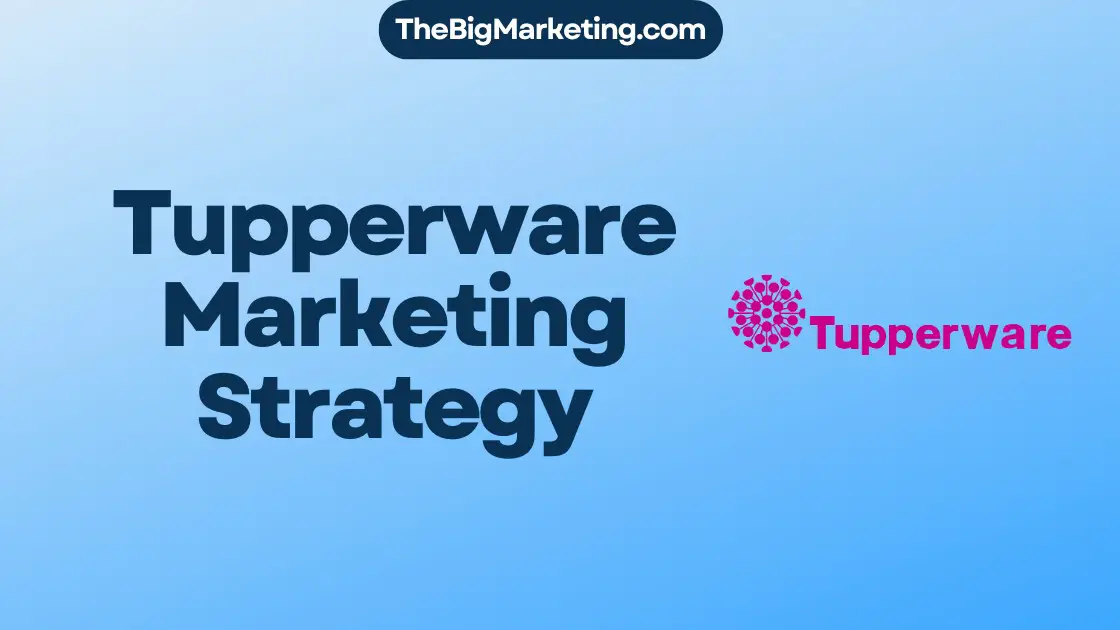AstraZeneca, a renowned pharmaceutical company, is paving the way for an innovative marketing strategy in 2024. With a focus on digital marketing and a comprehensive approach to pharmaceutical marketing, AstraZeneca aims to drive growth and scientific leadership in the industry.
Digital marketing has become a crucial element in the success of pharmaceutical companies. Recognizing this, AstraZeneca is committed to leveraging digital platforms to reach a wider audience and deliver their message effectively. By utilizing various digital channels and strategies, they aim to stay ahead of the competition and connect with their target market.
To achieve their marketing goals, AstraZeneca is focusing on core therapy areas and a growing late-stage pipeline. By concentrating their efforts on priority growth platforms and pipeline projects, they aim to deliver innovative medicines that address critical medical needs.
AstraZeneca also aims to transform the way they carry out research and development. They plan to reshape their footprint, increase emphasis on novel biology and personalized healthcare, and partner with leading academic institutions. This commitment to research and development will enable them to develop breakthrough treatments and provide better healthcare solutions to patients.
As AstraZeneca embarks on their marketing strategy for 2024, they are determined to make a significant impact on the pharmaceutical industry. With their focus on digital marketing and commitment to scientific leadership, they are set to revolutionize the way pharmaceutical companies market their products and contribute to advancements in patient care.
Key Takeaways:
- AstraZeneca is implementing a digital marketing strategy to drive growth and scientific leadership.
- They are focusing on core therapy areas and prioritizing pipeline projects.
- AstraZeneca aims to reshape their research and development efforts and partner with leading academic institutions.
- Their commitment to innovation and personalized healthcare will bring breakthrough treatments to patients.
- AstraZeneca’s marketing strategy for 2024 is poised to revolutionize pharmaceutical marketing practices.
AstraZeneca’s Strategic Priorities
AstraZeneca has identified several strategic priorities to drive growth and innovation in the pharmaceutical industry. These priorities encompass both on-market initiatives and future pipeline projects, with a specific emphasis on their biologics portfolio.
Driving On-Market Growth Platforms
AstraZeneca is focused on maximizing the potential of their existing products and therapies by leveraging their therapeutic areas of expertise. They prioritize core therapy areas such as respiratory, inflammation & autoimmunity, cardiovascular & metabolic disease, and oncology. By investing in these areas, AstraZeneca aims to deliver innovative solutions that meet the evolving needs of patients.
Progressing the Phase II Pipeline
The company is committed to advancing their Phase II pipeline, which includes a range of promising projects across various therapeutic areas. By progressing these pipeline projects, AstraZeneca aims to bring new treatments and therapies to market, addressing unmet medical needs and expanding their biologics portfolio.
Launching Specialty Care Products
AstraZeneca recognizes the importance of specialty care products in meeting the unique needs of patients with complex and rare diseases. They are dedicated to developing and launching innovative specialty care products that offer targeted and personalized treatment options.
Rebuilding the R&D Engine
AstraZeneca understands the critical role of research and development (R&D) in driving scientific leadership and innovation. They have made a commitment to rebuild their R&D engine by reshaping their footprint, increasing emphasis on novel biology and personalized healthcare, and forming strategic partnerships with leading academic institutions.
Simplifying the Business
In order to enhance efficiency and streamline operations, AstraZeneca is focused on simplifying their business. By removing unnecessary complexity and optimizing processes, they aim to create additional headroom for growth and improve productivity across the organization.
Leveraging Business Development and Acquisitions
AstraZeneca recognizes the value of strategic business development and acquisitions in accelerating their growth and expanding their biologics portfolio. By actively seeking opportunities for collaboration and acquisitions, they aim to enhance their capabilities and bring transformative therapies to patients in need.
| Strategic Priorities | Focus Areas |
|---|---|
| Driving On-Market Growth Platforms | Respiratory, Inflammation & Autoimmunity, Cardiovascular & Metabolic Disease, Oncology |
| Progressing the Phase II Pipeline | Various therapeutic areas |
| Launching Specialty Care Products | Specialty care for complex and rare diseases |
| Rebuilding the R&D Engine | Novel biology, personalized healthcare, strategic partnerships |
| Simplifying the Business | Process optimization, efficiency improvement |
| Leveraging Business Development and Acquisitions | Strategic collaborations, acquisitions |
AstraZeneca’s strategic priorities reflect their commitment to therapeutic areas, pipeline projects, and their biologics portfolio. By focusing on these areas, the company aims to deliver innovative solutions, transform patient outcomes, and solidify their position as a leader in the pharmaceutical industry.
Achieving Scientific Leadership
AstraZeneca is committed to executing a focused innovation-driven global biopharmaceuticals strategy. Leveraging their strengths in large and small molecules, immunotherapies, and protein engineering technologies, AstraZeneca aims to achieve scientific leadership in the pharmaceutical industry.
The company focuses on three core therapy areas: respiratory, inflammation & autoimmunity, cardiovascular & metabolic disease, and oncology. By prioritizing these areas, AstraZeneca can address a wide range of medical needs and develop targeted treatments that improve patient outcomes.
Core Therapy Areas
AstraZeneca’s focus on core therapy areas allows them to concentrate their efforts and resources where they can have the most significant impact. These areas include:
- Respiratory: Developing groundbreaking treatments for respiratory conditions such as asthma and chronic obstructive pulmonary disease (COPD).
- Inflammation & Autoimmunity: Addressing the underlying causes of inflammation and autoimmune diseases to provide effective therapies.
- Cardiovascular & Metabolic Disease: Advancing treatments for conditions like cardiovascular disease, diabetes, and metabolic disorders to improve patient outcomes.
- Oncology: Accelerating the development of innovative cancer therapies to transform cancer treatment outcomes.
To achieve scientific leadership, AstraZeneca aims to accelerate the development of new molecular entities (NMEs) and increase investment in life cycle management to support key products. This commitment to innovation and research ensures the company remains at the forefront of the rapidly evolving pharmaceutical industry.
| Strengths | Therapy Areas |
|---|---|
| Large and Small Molecules | Respiratory |
| Immunotherapies | Inflammation & Autoimmunity |
| Protein Engineering Technologies | Cardiovascular & Metabolic Disease |
| Oncology |
Return to Growth
AstraZeneca is committed to maximizing the potential of its assets to navigate a period of revenue decline. With a strategic focus on key growth platforms and markets, AstraZeneca aims to significantly exceed current market consensus for 2018 revenues.
Brilinta: Leading the Way in the Non-Insulin Diabetes Market
Brilinta, AstraZeneca’s innovative antiplatelet therapy, has established a leading position in the non-insulin diabetes market. In collaboration with their partner BMS, AstraZeneca is driving sustainable growth by offering a superior treatment option for patients with diabetes.
Targeting Emerging Markets for Growth
AstraZeneca recognizes the immense potential of emerging markets, especially China, in driving its future growth. By expanding its presence and investing in these markets, AstraZeneca aims to capture the growing demand for quality healthcare solutions and establish itself as a trusted partner in improving patient outcomes.
Maximizing the Potential of the Respiratory Portfolio
AstraZeneca’s respiratory portfolio, which includes well-established brands such as Symbicort and Pulmicort, remains a key focus area for the company. By leveraging its expertise and innovation in respiratory medicine, AstraZeneca aims to address the unmet needs of patients with respiratory conditions and maximize the potential of its portfolio.
Capturing Opportunities in the Japanese Market
AstraZeneca understands the importance of the Japanese market in the pharmaceutical industry. With a dedicated focus on the Japanese market, AstraZeneca aims to leverage its established brands and partnerships to capture the opportunities presented in this market. By collaborating with local stakeholders, AstraZeneca seeks to provide innovative solutions and improve patient outcomes in Japan.
To illustrate the growth potential of AstraZeneca’s key focus areas, refer to the table below:
| Key Growth Platforms | Market Potential |
|---|---|
| Brilinta | Leading position in the non-insulin diabetes market |
| Emerging Markets | Growth opportunities in China and other emerging markets |
| Respiratory Portfolio | Maximizing the potential of well-established brands |
| Japanese Market | Capturing opportunities and improving patient outcomes |
Through a strategic focus on key growth platforms, emerging markets, the respiratory portfolio, and the Japanese market, AstraZeneca is poised to return to a path of sustained growth and enhance its position as a leading global pharmaceutical company.
Simplification and Productivity
AstraZeneca is dedicated to streamlining its organization and processes in order to support its strategic objectives. With a focus on driving productivity improvements and eliminating unnecessary complexity, AstraZeneca aims to create additional headroom for business growth. As part of this effort, the company has recently announced a series of restructuring activities that will result in a reduction in global headcount by approximately 2,300 employees. These changes are estimated to incur one-time restructuring charges of $2.3 billion.
By implementing organizational simplification measures, AstraZeneca aims to enhance operational efficiency and optimize resource allocation. The company recognizes the importance of aligning its workforce and operations to effectively deliver on its strategic goals. Through these efforts, AstraZeneca seeks to create a more agile and responsive organization that can adapt to changing market dynamics and drive sustainable growth.
Productivity improvements play a crucial role in enabling AstraZeneca to deliver innovative medicines and breakthrough treatments to patients around the world. By streamlining processes, eliminating redundancies, and fostering a culture of continuous improvement, the company ensures that its resources are focused on activities that add the most value.
As part of its commitment to transparency, AstraZeneca acknowledges that the restructuring activities will result in one-time charges. These charges reflect the company’s proactive approach to driving meaningful change and optimizing its cost structure. By strategically managing these costs, AstraZeneca aims to achieve long-term financial stability and allocate resources to areas that will drive future growth.
Organizational Simplification Initiatives
AstraZeneca’s organizational simplification initiatives encompass various aspects of the company’s operations, including:
- Streamlining decision-making processes and reducing bureaucracy
- Consolidating operations and functions to eliminate duplication
- Optimizing the use of digital technologies and automation
- Enhancing collaboration and knowledge sharing
- Creating a more customer-centric organization
These initiatives are designed to foster a more agile and efficient operating model that enables AstraZeneca to respond rapidly to market changes, accelerate innovation, and bring life-changing medicines to patients more quickly.
Restructuring Charges and Headcount Reduction
The one-time restructuring charges associated with AstraZeneca’s organizational simplification efforts reflect the costs incurred in implementing these initiatives. The charges cover various aspects, including severance and other employee-related costs, as well as costs associated with consolidating facilities and systems.
Additionally, the headcount reduction resulting from the restructuring activities reflects AstraZeneca’s commitment to optimizing its workforce and aligning it with the company’s strategic priorities. This reduction allows the company to optimize its cost structure, improve operational efficiency, and create a more agile organization capable of delivering sustainable growth.
| Restructuring Charges Breakdown | Estimated Amount |
|---|---|
| Severance and employee-related costs | $1.8 billion |
| Facilities consolidation and system integration | $0.5 billion |
Enterprise-wide Alignment with Agile
AstraZeneca recognizes the importance of Agile practices in driving successful project implementation and achieving operational excellence. As part of its commitment to deliver life-changing medicines and continuously improve its IT environment, AstraZeneca has been adopting Agile practices across its IT change portfolio.
Although the company has been utilizing Agile methods for several years, AstraZeneca has recently decided to leverage Agile more extensively to bring about a significant improvement in delivery performance. By embracing Agile principles and methodologies, the organization aims to enhance collaboration, flexibility, and efficiency in its project execution.
In order to support this prominent transformation effort, AstraZeneca has partnered with PA Consulting, a renowned management consulting firm with deep expertise in Agile implementation. Together, they are working to integrate Agile practices enterprise-wide and foster a culture of innovation, adaptability, and collaboration.
To scale Agile rapidly and effectively, AstraZeneca has selected the Scaled Agile Framework® (SAFe®). This widely recognized framework provides a structured approach that aligns Agile practices, teams, and processes at an organizational level. By implementing SAFe®, AstraZeneca aims to optimize resource utilization, improve time-to-market, and cultivate a competitive advantage in the dynamic pharmaceutical industry.
Benefits of Enterprise-Wide Agile Adoption:
- Improved Time-to-Market: Agile practices enable AstraZeneca to deliver value at a faster pace, ensuring that critical projects are completed within the expected timeframe.
- Enhanced Business Innovation: By embracing Agile, AstraZeneca fosters a culture of creativity and innovation, empowering teams to explore new ideas and approaches to drive business growth.
- Increased Competitive Advantage: Agile practices enable AstraZeneca to respond quickly to market changes, making it more agile and adaptable than traditional project management approaches.
Agile Adoption in AstraZeneca
| Benefits | Impact |
|---|---|
| Accelerated project delivery | Reduced time-to-market for life-changing medicines |
| Improved collaboration and communication | Enhanced efficiency and effectiveness in cross-functional teams |
| Greater adaptability to changing requirements | Increased responsiveness to customer needs and market dynamics |
| Enhanced product quality | Reduced defects and improved customer satisfaction |
Value Delivered through Agile Adoption
AstraZeneca’s Agile adoption has proven to be highly successful, resulting in numerous benefits for the organization. Teams have reported significantly faster time-to-value delivery, reduced team sizes, and improved quality across projects. Adopting the Scaled Agile Framework® (SAFe®), AstraZeneca has witnessed increased Agile maturity throughout the business.
By embracing Agile principles and practices, AstraZeneca has experienced a paradigm shift in project delivery. The company’s commitment to Agile methodologies has allowed them to streamline their processes, empower cross-functional teams, and enhance collaboration and communication.
The adoption of Agile has led to reduced team sizes and improved efficiency, enabling quicker decision-making and faster response to changing market demands. With smaller, more focused teams, AstraZeneca has been able to harness the full potential of each team member, fostering a sense of ownership and accountability.
The implementation of Agile has also greatly contributed to improved quality in AstraZeneca’s deliverables. Through iterative development cycles, teams have been able to continuously evaluate and enhance the quality of their work. This focus on quality has strengthened AstraZeneca’s reputation for delivering reliable and effective solutions.
AstraZeneca’s Agile maturity extends beyond software development projects. The company has successfully integrated Agile practices into various business functions, including marketing, operations, and supply chain management. The benefits of Agile have permeated every area of the organization, fostering a culture of continuous improvement and adaptability.
Looking forward, AstraZeneca is committed to further expanding its adoption of Agile methodologies. The company aims to double its Agile implementation in the coming year, leveraging the power of Agile to accelerate the development of next-generation radioconjugates and drive transformative outcomes for patients.
Overall, AstraZeneca’s Agile journey has delivered remarkable value, enabling faster time-to-value delivery, reducing team sizes, and improving the overall quality of their work. As they continue to embrace Agile principles and practices, AstraZeneca is poised to achieve even greater success in delivering innovative solutions and driving positive change in the pharmaceutical industry.
Acquisition of Fusion Pharmaceuticals
AstraZeneca continues to advance its mission of revolutionizing cancer treatment through targeted approaches. In line with this goal, the company has recently entered into a definitive agreement to acquire Fusion Pharmaceuticals, a clinical-stage biopharmaceutical company.
Fusion Pharmaceuticals focuses on the development of next-generation radioconjugates, which hold tremendous potential in delivering targeted treatments. This acquisition represents a significant milestone in AstraZeneca’s journey to replace traditional cancer treatment regimens with more precise and effective therapies.
One of the notable projects in Fusion’s robust pipeline is a potential groundbreaking treatment for metastatic castration-resistant prostate cancer (mCRPC) that targets prostate-specific membrane antigen (PSMA). This innovative approach capitalizes on the unique properties of radioconjugates to specifically deliver radiation to cancer cells, offering new hope for patients.
By acquiring Fusion Pharmaceuticals, AstraZeneca gains access to cutting-edge research, advanced technology, and unparalleled expertise in the development of actinium-based radioconjugates, which hold immense promise in cancer therapeutics.
This strategic move further validates AstraZeneca’s commitment to transforming cancer treatment and improving patient outcomes by harnessing the power of targeted therapies. The acquisition of Fusion Pharmaceuticals reinforces AstraZeneca’s efforts to shape the future of cancer care and underscores its dedication to pioneering innovative solutions.
The Potential of Radioconjugates in Cancer Treatment
To fully grasp the impact of Fusion Pharmaceuticals’ work, it is essential to understand the concept of radioconjugates. Radioconjugates are a class of targeted treatments that combine a radioactive isotope with a specific molecule that can bind to cancer cells.
The radioisotope emits radiation, which is delivered directly to the cancer cells, resulting in highly localized and precise therapy. This approach minimizes damage to healthy tissues and maximizes the effectiveness of treatment.
By leveraging the synergistic properties of radioisotopes and targeted molecules, radioconjugates offer a revolutionary approach to cancer treatment that has the potential to significantly improve patient outcomes and quality of life.
| Benefits of Radioconjugates in Cancer Treatment |
|---|
| – Targeted delivery of radiation to cancer cells |
| – Minimization of damage to healthy tissues |
| – Potential for enhanced treatment efficacy |
| – Personalized and precise therapy |
| – Reducing side effects associated with traditional treatments |
As AstraZeneca and Fusion Pharmaceuticals join forces, their collective expertise and dedication to advancing radioconjugate therapies will undoubtedly propel the field of cancer treatment forward and redefine the future of oncology.
Expertise and Capabilities in Actinium-based RCs
The acquisition of Fusion Pharmaceuticals brings new expertise and capabilities to AstraZeneca in actinium-based radioconjugates. With Fusion’s state-of-the-art R&D and manufacturing facilities, as well as a strong supply chain for actinium-225, AstraZeneca strengthens its presence in Canada and enhances its commitment to developing novel radioconjugates for cancer treatment.
The Advantages of Actinium-based Radioconjugates
Actinium-based radioconjugates offer several advantages in targeted cancer therapy. These innovative treatments combine the therapeutic potential of a radioactive isotope (actinium-225) with a specific targeting agent. The actinium-225 emits potent alpha particles that can deliver high levels of localized radiation to cancer cells, while the targeting agent selectively binds to molecules expressed on the cancer cell surface, ensuring precise delivery of the radiation to tumor sites.
This targeted approach minimizes damage to healthy tissues, reduces systemic toxicity, and enhances the therapeutic index of the treatment. Actinium-based radioconjugates have shown promising results in preclinical and early clinical studies, demonstrating their potential to revolutionize cancer treatment by improving patient outcomes and survival rates.
Research and Development (R&D)
AstraZeneca’s acquisition of Fusion Pharmaceuticals provides access to Fusion’s extensive experience and expertise in actinium-based radioconjugate R&D. Fusion’s dedicated R&D team brings valuable insights into the design, development, and optimization of radioconjugates, including target selection, linker chemistry, and radiolabeling techniques.
By leveraging this knowledge, AstraZeneca can accelerate its own R&D efforts in the field of actinium-based radioconjugates. The collaboration between AstraZeneca and Fusion Pharmaceuticals will foster scientific exchange, enabling the development of innovative radioconjugate platforms that have the potential to address unmet medical needs in various cancer types.
Manufacturing
Fusion Pharmaceuticals’ state-of-the-art manufacturing facilities provide AstraZeneca with the necessary infrastructure to produce actinium-based radioconjugates at scale. The expertise gained from Fusion’s manufacturing processes and quality control systems will contribute to the successful production and commercialization of these advanced therapies.
Ensuring consistent and streamlined manufacturing processes is crucial for the reliable and efficient production of actinium-based radioconjugates. With Fusion’s manufacturing capabilities, AstraZeneca can meet the growing demand for these targeted treatments, reducing supply chain risks and ensuring timely access for patients in need.
Supply Chain
In addition to its R&D and manufacturing capabilities, Fusion Pharmaceuticals possesses a strong supply chain for actinium-225, a key radioisotope used in the production of actinium-based radioconjugates. AstraZeneca’s acquisition of Fusion strengthens its position in securing a stable and reliable source of actinium-225, thereby ensuring uninterrupted supply for clinical trials and future commercialization.
An efficient and robust supply chain is essential for the successful development and delivery of actinium-based radioconjugates. AstraZeneca’s strengthened supply chain, coupled with its expertise in pharmaceutical logistics and distribution, will enable the company to meet the growing demand for these innovative cancer therapeutics.
| Expertise and Capabilities | Benefits |
|---|---|
| R&D | Accelerated development of novel radioconjugates |
| Manufacturing | Scalable production of actinium-based radioconjugates |
| Supply Chain | Uninterrupted access to actinium-225 for clinical trials and commercialization |
Financial Considerations
As part of the agreement, AstraZeneca will acquire all outstanding shares of Fusion Pharmaceuticals for a cash price of $21.00 per share at closing. This transaction represents a transaction value of approximately $2 billion, with a combination of upfront cash and a non-transferable contingent value right. The contingent value right provides additional potential value based on the achievement of specific milestones.
Including both the upfront and maximum potential contingent value payments, the total transaction value amounts to approximately $2.4 billion. This premium reflects AstraZeneca’s confidence in the potential of Fusion Pharmaceuticals and their commitment to advancing transformative cancer treatments.
The cash costs associated with the transaction will be funded using AstraZeneca’s existing cash resources. The company is well-positioned financially to support this acquisition and continues to prioritize strategic investments in promising therapies.
The transaction is expected to close in the second quarter of 2024, subject to customary closing conditions. Once completed, the acquisition of Fusion Pharmaceuticals will further strengthen AstraZeneca’s position in the field of radioconjugates and contribute to their mission of improving patient outcomes in cancer treatment.
| Transaction Value | Premium | Contingent Value Right | Cash Costs |
|---|---|---|---|
| $2 billion | Approximately $400 million | Non-transferable contingent value right | Funded from existing cash resources |
Sharing Best Practices in Agile Adoption
AstraZeneca and Fusion Pharmaceuticals have successfully implemented various best practices in their Agile adoption journey. These practices have contributed to the organizations’ ability to optimize their processes, improve collaboration, and enhance overall project delivery. By addressing key areas such as culture change, governance alignment, face-to-face Agile Release Trains (ARTs), and task tracking tools, both companies have paved the way for successful Agile transformations.
Culture Change and Agile Values
AstraZeneca and Fusion Pharmaceuticals recognized the importance of culture change in their Agile adoption. To ensure a smooth and effective transition, they focused on creating culture leaders and promoting Agile values throughout their organizations. By embedding these values into the fabric of their teams, both companies fostered an environment that embraces collaboration, continuous improvement, and adaptability.
Governance Alignment and Regulatory Compliance
Aligning governance and procurement processes with Agile methodologies was a crucial aspect of AstraZeneca and Fusion Pharmaceuticals’ transformation journeys. By streamlining decision-making processes and enhancing transparency, both organizations were able to accelerate progress and ensure compliance with regulatory requirements. This alignment fostered effective cross-functional collaboration and empowered teams to make data-driven decisions in a timely manner.
Face-to-Face Agile Release Trains (ARTs) and Task Tracking Tools
AstraZeneca and Fusion Pharmaceuticals leveraged face-to-face Agile Release Trains (ARTs) to facilitate collaboration and synchronize iterations across their teams. These ARTs allowed for seamless communication, increased alignment, and enhanced coordination among various stakeholders. Additionally, the use of task tracking tools enabled efficient progress monitoring, improved accountability, and better visibility into the status of deliverables.
| Key Benefits of Best Practices in Agile Adoption | |
|---|---|
| 1 | Culture Change |
| 2 | Governance Alignment |
| 3 | Face-to-Face Agile Release Trains (ARTs) |
| 4 | Task Tracking Tools |
The implementation of these best practices resulted in several benefits for both AstraZeneca and Fusion Pharmaceuticals. The table below summarizes these key benefits:
Table: Key Benefits of Best Practices in Agile Adoption
- Culture Change: Promotes collaboration, continuous improvement, and adaptability.
- Governance Alignment: Streamlines decision-making processes and ensures regulatory compliance.
- Face-to-Face Agile Release Trains (ARTs): Facilitates collaboration, alignment, and coordination.
- Task Tracking Tools: Enables efficient progress monitoring and enhances accountability.
By embracing these best practices, AstraZeneca and Fusion Pharmaceuticals have created an Agile foundation that supports their strategic goals, improves project outcomes, and positions them for continued success in their respective industries.
Conclusion
AstraZeneca’s Marketing Strategy for 2024 demonstrates their commitment to driving growth, achieving scientific leadership, and transforming cancer treatment outcomes. With a focus on delivering innovative medicines and leveraging Agile practices, AstraZeneca aims to improve patient outcomes and become a global leader in the pharmaceutical industry.
Through strategic initiatives and a strong commitment to research and development, AstraZeneca is dedicated to staying at the forefront of innovative pharmaceutical marketing. By acquiring expertise in next-generation radioconjugates, they are set to revolutionize cancer treatments and make a significant impact on patients’ lives.
With a clear vision and an unwavering commitment to improving healthcare, AstraZeneca’s Marketing Strategy for 2024 positions them as pioneers in the industry. Their transformative approach to cancer treatments and dedication to delivering innovative solutions makes them a driving force in the pharmaceutical landscape.





